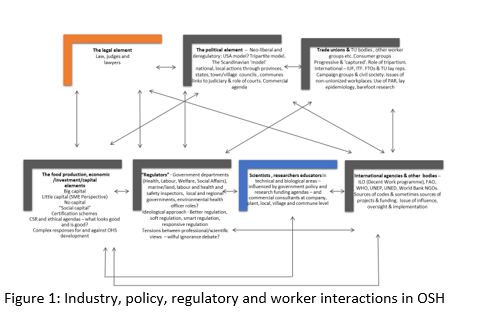REGULATION OF AQUACULTURE OCCUPATIONAL HEALTH AND SAFETY: A GLOBAL OVERVIEW
This presentation introduces a session on regulation of aquaculture occupational health and safety (AOSH) in different countries. It presents an overview of findings related to AOSH regulation drawn from a forthcoming scoping report on AOSH commissioned by the Food and Agriculture Association co-authored by Watterson, Neis and others . An expert panel was asked to examine the often neglected and under-researched subject of AOSH and its immediate supply chains by gathering, reviewing and synthesizing existing scientific and gray literature in order to produce a series of national and regional profiles of AOSH. The focus included hazards and risks and opportunities/constraints for addressing these including through regulation . The FAO report offers a framework for examining AOSH across diverse settings and types of activities and provides a tentative analysis of the main production activities at global, regional and national levels and how these may impact on AOSH and nearby communities, both negatively and positively . In 2016, there were over 19 million aquaculture workers in the world – including large concentrations in China and South-east Asia. In some marine settings, aquaculture is one of the most hazardous industries in the world along with fishing and aquaculture. Much of the attention on aquaculture has focused on employment, food security, food safety risks and concerns about environmental sustainability. L ess attention has been paid to AOSH, including to regulatory OSH frameworks and effectiveness . The scoping report shows Figure 1: Industry, policy, regulatory and worker interactions in OSH
that AOSH continues to be of marginal interest for many agencies and hence regulation may be neglected. In most contexts, aquaculture falls under agriculture and fisheries which, in turn, have specific laws and regulations that rarely specifically cover aquaculture except for regulations, codes and official guidance on such things as fish cages and manual handling. In mariculture,
jurisdiction may be split between departments and agencies responsible for navigation, fishing and seafaring safety and those responsible for the occupational health of workers.
